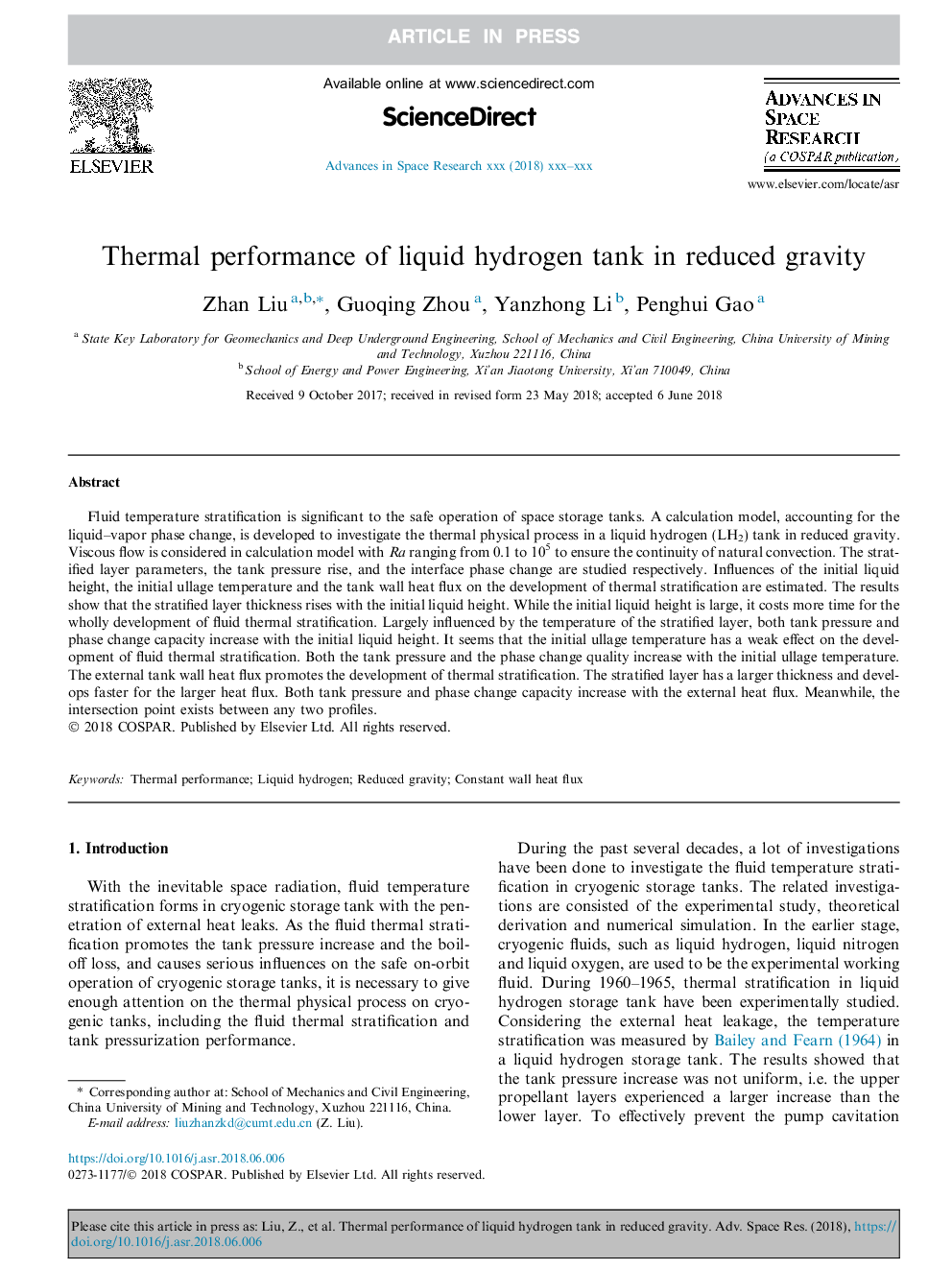| Article ID | Journal | Published Year | Pages | File Type |
|---|---|---|---|---|
| 8131642 | Advances in Space Research | 2018 | 10 Pages |
Abstract
Fluid temperature stratification is significant to the safe operation of space storage tanks. A calculation model, accounting for the liquid-vapor phase change, is developed to investigate the thermal physical process in a liquid hydrogen (LH2) tank in reduced gravity. Viscous flow is considered in calculation model with Ra ranging from 0.1 to 105 to ensure the continuity of natural convection. The stratified layer parameters, the tank pressure rise, and the interface phase change are studied respectively. Influences of the initial liquid height, the initial ullage temperature and the tank wall heat flux on the development of thermal stratification are estimated. The results show that the stratified layer thickness rises with the initial liquid height. While the initial liquid height is large, it costs more time for the wholly development of fluid thermal stratification. Largely influenced by the temperature of the stratified layer, both tank pressure and phase change capacity increase with the initial liquid height. It seems that the initial ullage temperature has a weak effect on the development of fluid thermal stratification. Both the tank pressure and the phase change quality increase with the initial ullage temperature. The external tank wall heat flux promotes the development of thermal stratification. The stratified layer has a larger thickness and develops faster for the larger heat flux. Both tank pressure and phase change capacity increase with the external heat flux. Meanwhile, the intersection point exists between any two profiles.
Related Topics
Physical Sciences and Engineering
Earth and Planetary Sciences
Space and Planetary Science
Authors
Zhan Liu, Guoqing Zhou, Yanzhong Li, Penghui Gao,
